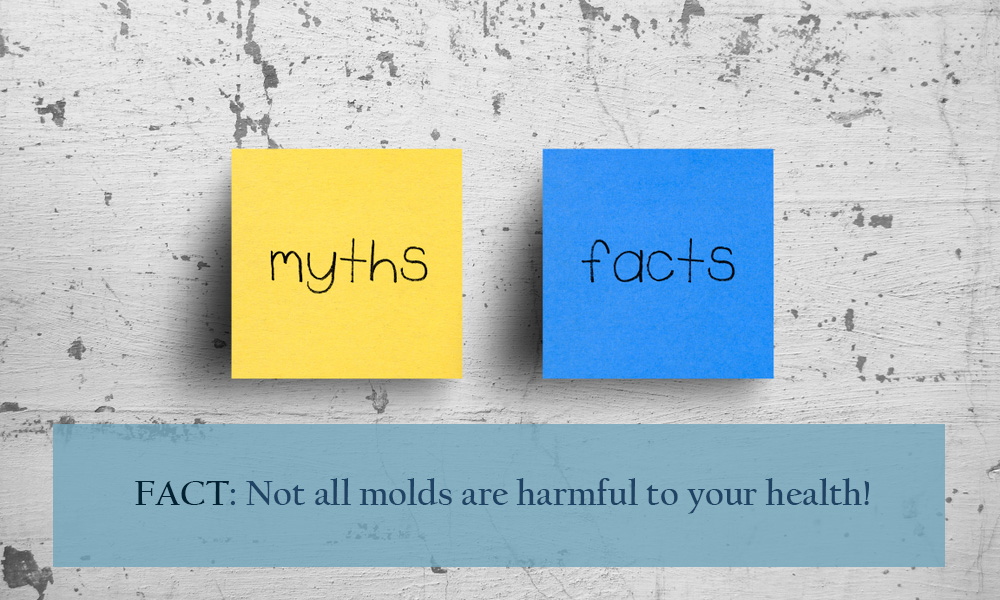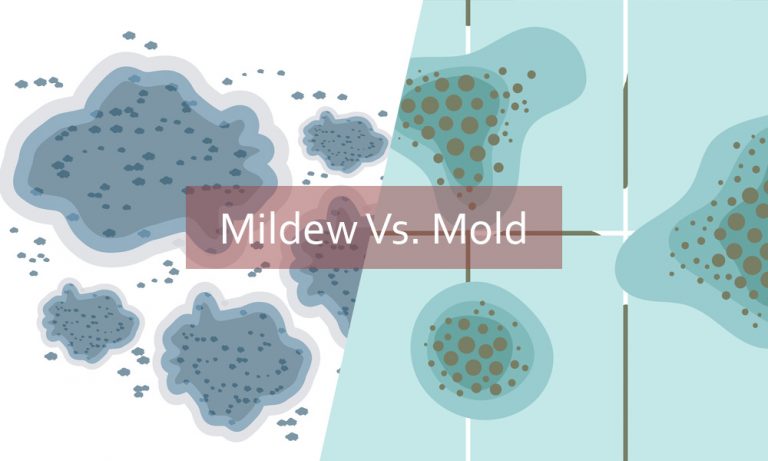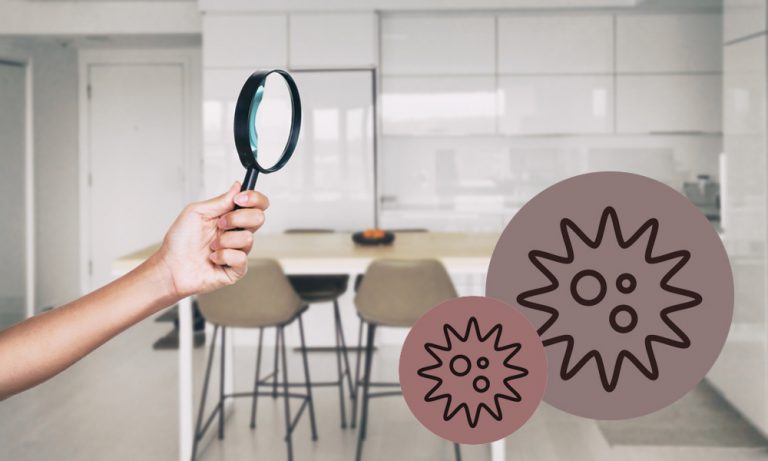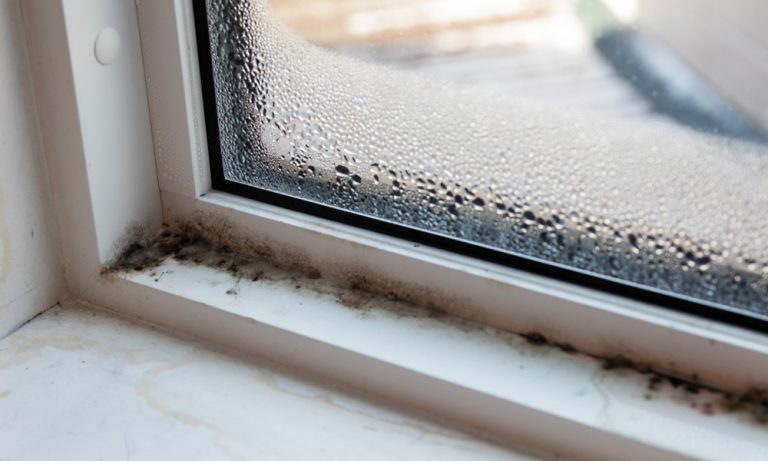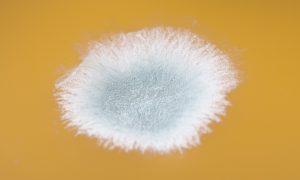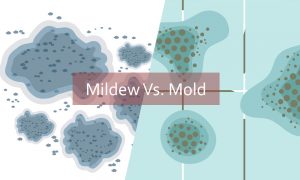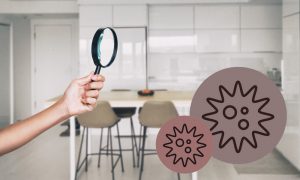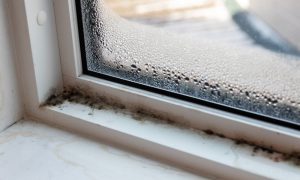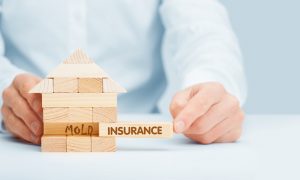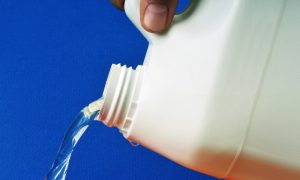The internet is home to a lot of information about molds that you should steer clear of to avoid mold problems in your building effectively. From sources that suggest mild mold cleaning to those that recommend removing all of your walls, seeking solutions to your mold issues on the internet can be confusing.
This article will help you avoid mold myths that may cost you ill-health or damage to the structure of your building. It is essential to separate fact from fiction when it comes to mold problems in the home or workplace.
Read on to find out the ten popular myths about molds and facts to debunk them.
Myth 1: Mold is a plant.
This is one of the most common myths about molds.
Fact: Mold is a fungus, not a plant.
Molds grow just like every other living organism, and they survive on oxygen and food too, but they belong to neither the plant nor the animal kingdom.
Molds belong to the kingdom fungi and reproduce through their spores. They can grow exponentially in just a few days and survive almost anywhere in the presence of moisture.
The most common materials that support mold growth in buildings are wood, carpet, food, insulation, and paper. Under a microscope, molds look like tiny mushrooms with root threads and a stalk.
Myth 2: Every type of mold is dangerous.
Fact: Not all molds are harmful to your health.
Generally, inhaling mold spores may cause allergic reactions and increase the risk of respiratory problems in highly sensitive people or people who have underlying conditions.
Some molds produce poisonous substances called mycotoxins. Mycotoxins are toxic compounds capable of making people sick. However, not all molds are dangerous to health.
There are certain types of molds used in making food and medicine. Molds like Geotrichum and Penicillium Roqueforti are used in the production and treatment of cheese. Others like Aspergillus Sojae and Penicillium Chrysogenum are used in meat and soy sauce production.
Myth 3: Your house should be completely free of mold.
Fact: Mold exists in virtually every environment and is very natural. Because of their naturally occurring feature, it is practically impossible to eliminate molds from the indoor environment.
Mold occurs in almost every home, and having molds at the point of normal fungal ecology will hardly cause you any problems. This means you can have mold in your home at a very low concentration without experiencing any mold symptoms.
We have lived with molds from time immemorial, and molds will always be around us. The primary concern should be how to control mold growth and avoid inhaling large quantities of mold spores, which may cause you to get sick. The amount of mold spores that can cause symptoms differs. While some people can live without illness with a small quantity of mold, others cannot.
Since complete mold removal is not feasible, if you notice mold growth in your building, you should hire professional mold remediation companies to inspect your home and get your mold levels back to a non-existing state.
Myth 4: You can always get rid of mold yourself.
False. According to the Environmental Protection Agency (EPA), you should avoid exposing yourself to mold.
Fact: A moldy area that is beyond 10 square feet should be handled by mold remediation experts.
Mold problems restricted to less than 10 square feet are categorized as level one and typically less cumbersome to fix, especially with professional assistance.
However, mold damage that extends beyond 10 square feet requires the services of a mold remediation company. Mold remediation experts have the necessary training and specialized equipment to restore your home environment without contaminating the unaffected areas.
In addition to this, you should never expose yourself directly to molds without the necessary protective equipment, as this could be dangerous to your health.
Whatever the level of mold damage in your home, it is advisable to hire a professional. Your attempt to remove mold on your own using some of the natural remedies could be fine, but using chemicals and bleach to remove mold may sometimes lead to an increase in its spread, or damage to the existing infrastructure.
Myth 5: Molds are harmless once they are killed.
Undermining the importance of mold removal after it has been killed could be very dangerous.
Fact: Molds can be unsafe even when they are dead. One can still have allergic reactions to dead mold or face mold regrowth if the moisture source is not taken care of.
The allergens in a mold that trigger allergic reactions or mold symptoms remain present even after the mold has been cleaned. These can cause adverse health effects and irritations to sensitive individuals like those with weakened immune systems, asthma, or underlying respiratory problems.
Frequent exposure to dead mold can also lead to sensitivity in previously non-sensitive people. As a result, killing alone is hardly a sufficient way to battle mold issues. Dead molds should be entirely removed. Affected materials should be replaced or repaired to avoid the spread of mold to other areas.
Myth 6: You should only worry about black molds
Black mold refers to a type of mold called Stachybotrys Chartrum with a fine-line fallacy that this is the only dangerous mold type.
Fact: Molds such as – green, blue, white, pink, or other colors can also be dangerous to your health.
Although many molds appear black, including the popular Stachybotrys Chartarum, these are not the only molds that can produce toxic materials harmful to your health. The color of a mold does not determine its level of toxicity.
In reality, some black molds do not produce toxins that cause adverse health issues. To stay safe, it is crucial to address any mold growth in your home, irrespective of the color. Mold experts are usually able to test or analyze molds to determine if they produce harmful toxins.
Myth 7: Mold allergies only occur in children and sensitive individuals.
Fact: Prolonged exposure to mold spores in large quantities can cause ill health in almost anyone, regardless of age, health conditions, or level of sensitivity.
Children and some groups of people like those with a week immune system tend to experience more intense reactions to mold, but other people can react to mold too. According to the Institute of Medicine in 2004, indoor mold exposure can result in upper respiratory tract symptoms in otherwise healthy people.
Common mold symptoms include coughing, stuffy nose, wheezing, watery or red eyes, and dizziness. Combined with poor ventilation and bad indoor air quality, the chances of healthy people experiencing mold symptoms may increase.
Myth 8: Molds always have a musty smell
You can always detect mold early through their smell. False.
Fact: Molds do not always smell
Molds can sometimes be hard to see and so smelling is a great way to detect them. Moldy odors are produced by microbial volatile organic compounds (mVOCs), usually very concentrated and unpleasant.
But molds may not always smell. Therefore, it is not advisable to depend on smell alone when looking for molds in your home. Inspect with both your eyes and your nose. Look out for unsightly fuzzy discolorations as much as you follow your nose to the source of any offensive smell.
Myth 9: Bleach is efficient in getting rid of mold.
Fact: Killing mold with bleach is not always efficient and has its health risks.
While bleach can help remove mold from nonporous surfaces, it is uncertain that it can kill all kinds of mold or penetrate porous surfaces for a thorough removal.
Bleach can speed up the mold regrowth rate, mainly if the source of moisture is not addressed. It can also cause further degeneration of the material, thereby escalating the problem, but more importantly, exposing yourself to bleach can be dangerous to your health.
Using bleach as a routine practice to remove mold is particularly discouraged by the Environmental Protection Agency. For proper mold removal that goes beyond just cleaning away mold from the surface of a material, you should hire a professional mold remediation company.
Further Reading: Here’s why you should never use bleach to treat mold
Myth 10: You should not be bothered if it’s just a small patch of mold.
Fact: Molds can spread within a very short period, and you can hardly determine the extent of a mold problem by the visible size.
Sometimes when molds appear adjacent to a hidden area or around ventilation systems, you may only be seeing a small portion of it. This can also occur when molds appear behind walls, and you can only see the exterior part appearing as just a small discoloration.
More importantly, molds spread very fast, and what appears as a spot may grow to become a large colony in just a few days.
When you find a hardly noticeable mold, you should pay more attention to the surroundings or have a mold remediation expert check it out to determine the severity and rule out any dangerous growth.
Conclusion
It would be best to avoid these myths when combating mold issues. The process of sanitization and mold remediation is best left to experts. Attempting to clean mold by yourself may lead to further spread with dangerous health consequences.
This article was originally published in Nov-2020 and was last updated in Dec-2020.
Author: Kenny

